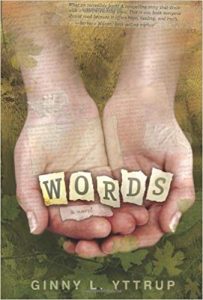How to Effectively “Tell” Emotions in Fiction
This post originally, drawn from material in my Emotional Mastery course, ran on Larry Brooks’s blog in the summer. Reprinted here for your edification!
Many amateur writers ineffectively tell or name what a character’s emotions are. That’s often because they haven’t learned masterful ways to get the emotion across.
Telling an emotion doesn’t make readers feel or experience the emotion. It often creates more problems: the writing gets burdened with lists of emotions, and in the writer’s attempt to push harder in the hope of conveying emotion, she overdoes it. Adding to that, she might throw in all those body sensations for good measure, cramming the prose with so much “emotion” that the only thing readers feel is irritation.
Yet, there may be times when telling emotion is masterfully done. You can find plenty of excellent novels in which characters name the emotions they’re feeling.
It Has to Be in Character
Think about your character. Yours might be the type to name her emotions. With a young character, for example, it’s wholly believable for her to think in simple labels, rather than in nuance and complexity of emotion. What she is feeling might be complex, and the reader would pick that up, but what she herself believes, how she interprets what she is feeling, might be told plainly as it is understood plainly.
If it’s in character for your character to think like that, then, by all means, do so.
What kind of character would name her emotion?
One that has enough self-awareness to be able to identify what she is feeling. Or at least try to identify. Or want to identify her emotion.
Not everyone is like that. A teen girl is more apt to ponder her emotions than a middle-aged highly educated male computer programmer.
Or not.
See, don’t default to assumptions and stereotypes. It’s all about personality. Maybe your computer geek is deeply in touch with what he calls his female side. Or maybe, conversely, he’s quick to jump to conclusions, and that includes defining his and others’ emotions by labeling without much thought.
Let’s take a look at the award-winning women’s fiction novel Words by Ginny Yttrup. Yttrup’s character, Sierra, understands her emotions. She is self-aware and notices when she is feeling something. This fits her character, who is an artist who’s been through much grief and loss (I’ll put in boldface where she identifies her emotion).
By the time I leave Ruby’s, it’s almost eleven, and the sun is high overhead. I unzip the canvas top from my Jeep, and Van and I take off with the wind in our hair—or fur. I head out Mt. Hermon Road toward Hwy 17 with the intent of returning home to work for the remainder of the day. But as I tick off the miles toward home, something nags at me—a distinct feeling that I’m going the wrong way.
The closer I get to home, the more agitated I become. By the time Hwy 17 turns into Ocean Street, my agitation has turned to anger. I pull off the street and into an empty parking lot.
“What? What do You want from me?”
Van cocks an ear and then sinks down in the passenger seat.
I reach over and pat his neck, “Sorry, boy, I’m not yelling at you.” I sigh, “I just . . . I just don’t know what to do.”
I rest my head on the steering wheel and try to figure out what to do. Should I go back and try to find the little girl again? No. That’s ridiculous. This has nothing to do with me . . .
What if it were Annie?
The question pricks my conscience and then stabs my heart.
“But it’s not Annie!” I scream. “She’s gone. She’s”—the word catches in my throat and I feel hot tears brimming—”dead.” I wipe away my tears with my fist and then bang my fist on the steering wheel.
“She’s dead and this has nothing to do with her or with me!” With that, I put the Jeep back in gear and pull back onto Ocean Street. Within minutes, I’m in my driveway and out of the Jeep.
I hold the driver’s side door open for Van. “Come on, get out.”
Van doesn’t move.
“Van, come on!” He still doesn’t move. I reach behind the front seat for Van’s leash and attach it to his collar.
“Van Gogh, come!” I speak the command in my firmest tone and tug on the leash. He resists and remains in the passenger seat.
I throw down my end of the leash and walk around the car and open the passenger door. “Van,” I say through clenched teeth, “get out now.”
Van jumps from his seat to the ground, runs around the front of the Jeep with his leash dragging behind him, and jumps back in the driver’s side door. He maneuvers over the gearshift and sits back in the passenger seat.
“Fine. Stay there!” I slam the passenger door and head for the bungalow. Again I feel hot tears slide down my cheeks. This time I don’t even bother wiping them away. I reach the front door, turn the knob, and remember my house key is in my backpack, which, of course, is still in the car.
I turn back toward the car and see through a blur of tears that Van is still holding his vigil in the front seat.
“And she thinks you’re ‘progress’? You’re just a pain in the neck!”
As I again reach behind the front seat, this time for my backpack, Van leans in and begins licking the tears from my face. “Stop it.” I push him away. But he moves closer, this time resting his wet muzzle on my shoulder.
It’s too much.
Twelve years’ worth of pain rumbles to the surface. There’s no stopping it. Like a train roaring through a tunnel, the sobs come with a force I can’t stop—great heaving sobs. I hold Van tight and soak his fur. I don’t care what I look like standing in my driveway, clinging to the dog in my car. I don’t care about anything except this pain I’ve held for so long.
And can hold no longer.
I don’t know how long I stand there—minutes? Hours? Finally the sobs wane. I climb into the passenger seat with Van and pull a few crumpled napkins from the glove compartment. I blow my nose and lean into Van again, resting my head on him and closing my eyes. Spent. Exhausted. But oddly at peace.
The question comes again: What if it were Annie?
I think of my daughter so long gone from me. I think of the dreams I had for us. I wonder, as I have a thousand times before, what she’d look like now if she were still alive. And then I remember the fear I saw in the eyes of the child in the clearing.
Yes. What if it was Annie and no one came to help her?
I get out of the Jeep and walk back to the driver’s side and get in.
“Okay, you win. We’re going back.” I’m not sure if I’m speaking to God or Van—they’re seemingly working together. But Van’s tail wags in response.
As I turn the key in the ignition, I realize I’m taking my first step of faith in over a dozen years. I’m not in control here.
And I’m scared to death.
In this powerful scene, we see that wonderful combination of showing emotion, telling emotion, and thoughts that reveal emotion (the three ways to convey emotion in characters).
Don’t Try to Name the Complex Emotions
 Sierra easily identifies the obvious surface emotions: anger, fear. But her moral dilemma, her inner conflict over this girl she’s seen in the woods who triggers memories of her daughter Annie’s death, sparks complex emotions. Those she doesn’t name.
Sierra easily identifies the obvious surface emotions: anger, fear. But her moral dilemma, her inner conflict over this girl she’s seen in the woods who triggers memories of her daughter Annie’s death, sparks complex emotions. Those she doesn’t name.
Instead, it’s her thoughts of Annie, of her loss, that show readers what causes the emotions she then indicates via body language. Thoughts lead to emotions, in both our characters and in our readers.
Use Anger to Good Advantage
Anger is an easy emotion to grab when we don’t want to face painful emotions: loss, pain, shame, guilt, grief, or hurt. But anger usually masks something else.
To many people, hurt sparks anger so it looks like anger. But anger is the result, not the root.
A character might tell the emotion she is feeling—anger—but the reader knows it’s not really anger she’s feeling. Her body sensations and behavior may say “anger,” because anger is on the surface and moving her.
This is why complex emotions are best revealed by thoughts. If readers know the source of the emotions, the why, then they can empathize with the situation, and what they feel, by placing themselves in that situation, will be those complex emotions that you do not name.
It Has to Be in POV
If we keep in mind that the narrative—all the narrative—in a scene is the POV character’s thoughts, it will be clearer to us when to tell emotion.
When would your character think to name an emotion? When she is aware of her feelings, right? In the kind of moment when the character would stop and consider how she’s feeling. And only if it fits the character.
For example, when a writer tells the reader via author intrusion that his character is jealous, it’s one step removed. It’s out of POV.
Jason stood at the corner and saw his girl flirting with Bill Jones in front of the bank. He was jealous because he really didn’t know if Rose’s affections were genuine or if she was just toying with him and he couldn’t bear the thought that she might like that jerk more than him.
We sense immediately that this is the author speaking to the reader. Jason isn’t thinking “I’m jealous because I really don’t know if Rose’s affections toward me are genuine.” Right?
One great way to check to see if your narrative is authentic when writing in third person is to switch it to first. So, here, first off, ask: Is Jason the type of guy to stop and explore his feelings—while he’s standing on a corner reacting to this unexpected scenario?
Not likely, even if he’s set up to be a touchy-feely kind of guy. Not even if he’s a therapist. Not in that moment when he is reacting. Maybe later when he’s processing he’ll admit to himself that he was jealous. And he might name the emotion. It could be in dialogue, for instance:
“What’s bugging you, bro?” Steve asked him.
“I saw Rose talking to that creep Jones,” Jason said.
Steve eyed him, and a smirk rose on his face. “Don’t tell me you’re jealous.”
“Sure I’m jealous. She just agreed to go to Vegas with me. You’d be jealous too, if Cindy was making eyes at a loser like Jones.”
In that kind of situation, it’s believable that Jason is going to name his emotion. And it would work as internal dialogue or narrative too:
Jason stormed off down the street and into the nearby coffee shop. He blew out a breath, feeling like he was about to blow a fuse. Admit it—you’re jealous. You just can’t trust her. And that’s your problem. It’s always been your problem.
Which is basically the same as
Jason stormed off down the street and into the nearby coffee shop. He blew out a breath, feeling like he was about to blow a fuse. He was jealous. No denying it. He thought he was past that, had gotten a handle on the jealousy after Denise dumped him. But here it was, like some ugly monster from the Black Lagoon slithering up his neck, whispering poisonous words into his ear.
That’s a bit melodramatic, but I hope you get the point. It’s all about how your character would think.
When you tell emotions in fiction in a masterful way, it can be effective, believable, and powerful.
Want to learn how to become a masterful wielder of emotion in your fiction? Enroll in my new online video course, Emotional Mastery for Fiction Writers.












Powerful post! Some writers stray from telling to overly showing emotions without finding the balance for the POV character.
Thanks, DiAnn. It was an interesting issue to ponder and research. I realized that we all name our emotions all the time (but it doesn’t mean we’re right, though!). But since everything is about POV, it must fit both the character and the moment to make it believable.
Thanks for the article. The “switch it to first” check is something I will try. The examples help also.
Question: showing/telling emotion seems to require a ‘tightness’ of the POV that makes it hard to include other information (clothing, setting) that the character wouldn’t be thinking about (for example, in their own home).
How do you balance those two things?
Hi John, that is a terrific question and an issue I often talk about. How important is it to know a character’s hair and eye color? How important is it to desribe, via POV, the items in a character’s room? It’s not. While we want to be sure to use sensory details to describe setting, we want every bit of information to help our story, to add mystery and tension, reveal bits about character to help us like/hate/empathize with that character. I have a lot of posts on masterful description of character and setting, so be sure to read those, as they have great examples of passages from novels by excellent writers who are masters at this.
As far as a character describing (thinking about) himself, it should be done in a way to reveal the character’s mind-set. Instead of having him think about how tall he is, if his height MATTERS in the story, you might have him wonder why no one ever cleans the top of their fridge (my husband, being 6’7″ just didn’t realize for most of his life that the “average” person couldn’t see the top of a fridge) and make a remark in conversation, with someone replying, “well, you would notice that!” In other words, any description about self (character) has to help the story and not just be a useless laundry list. A girl can hate her mousy, stringy hair and be trying to do something with it. That reveals description of her hair, but it serves a purpose.